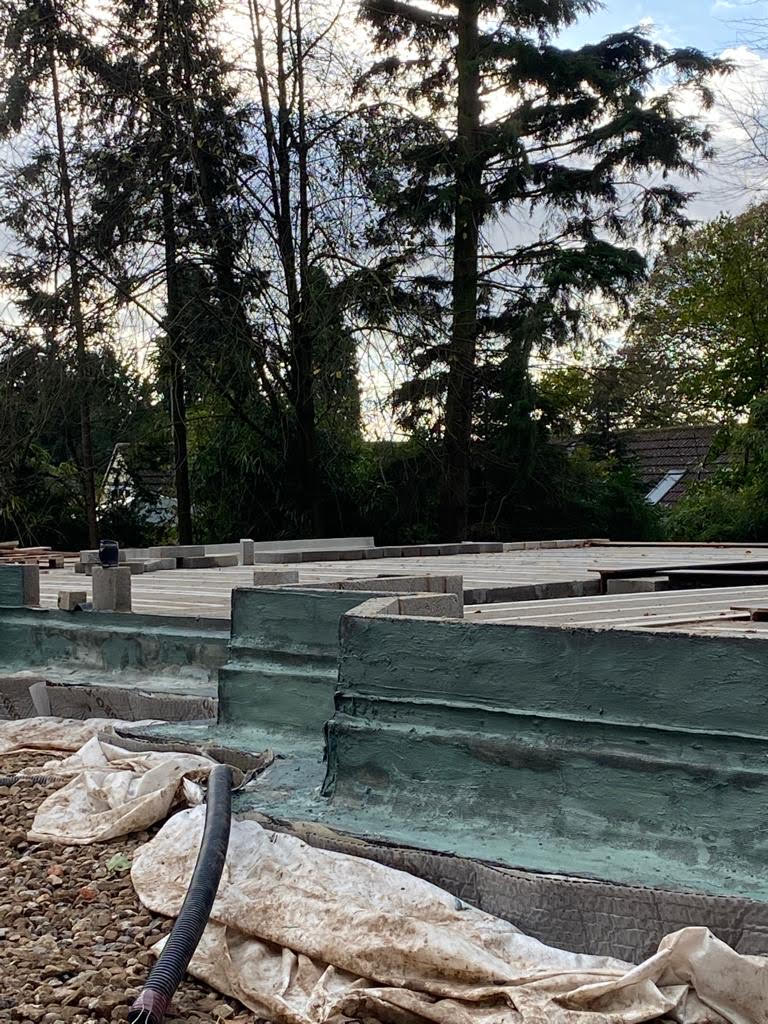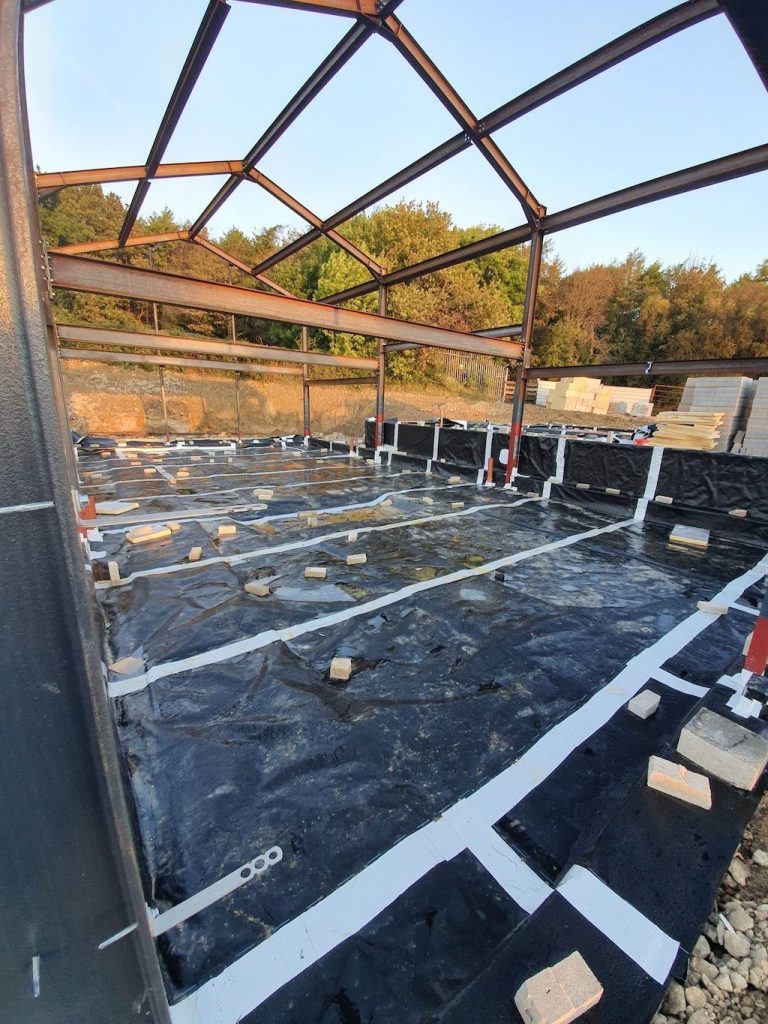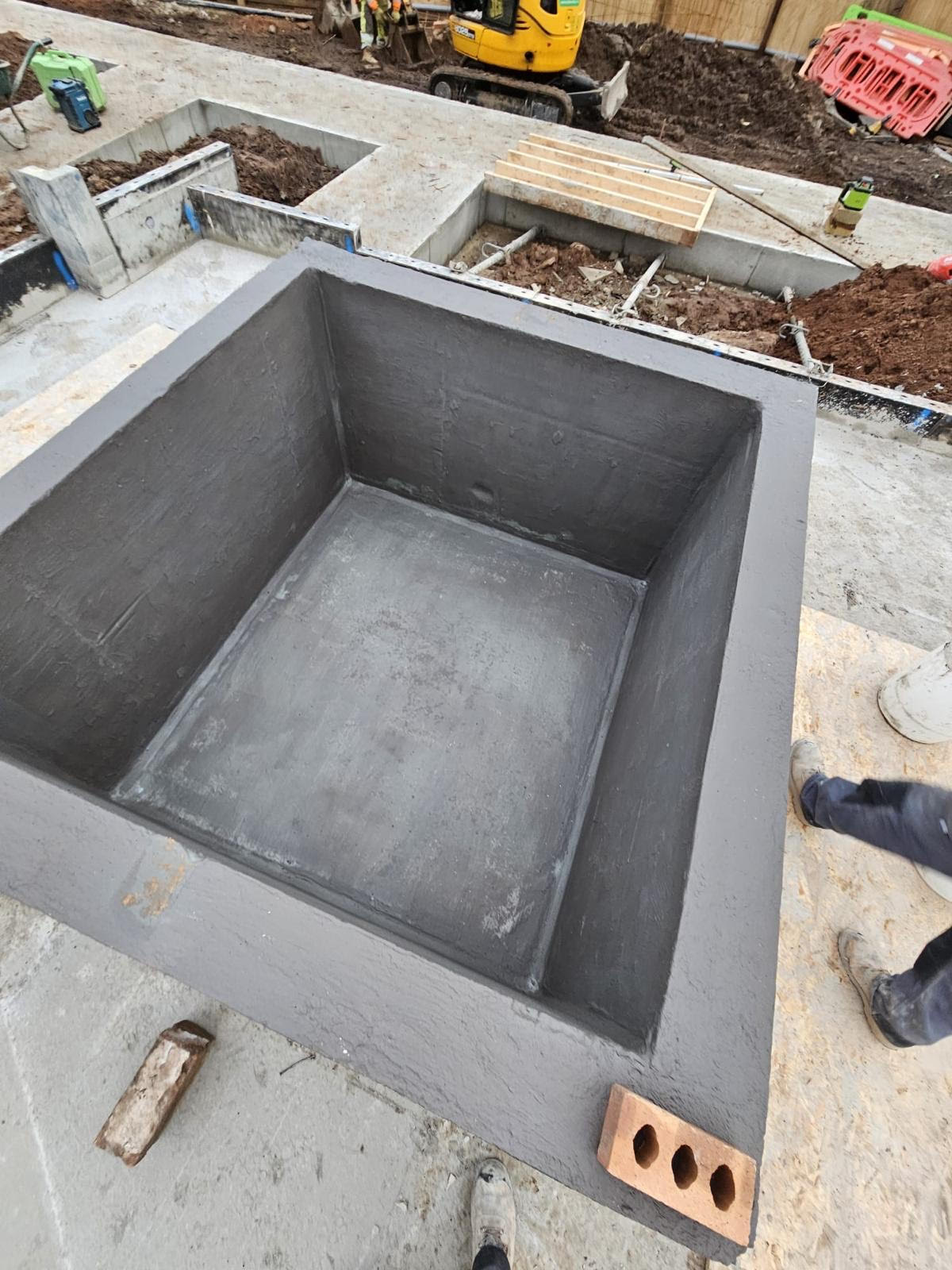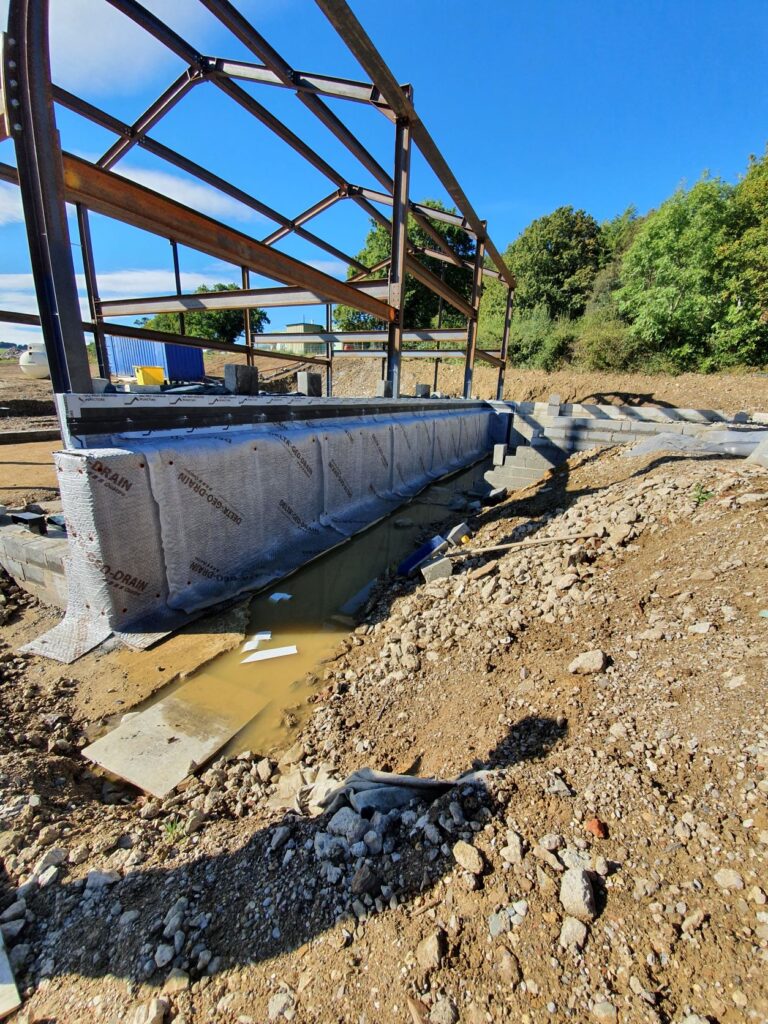The Damptec team have recently completed work on a new build property in Barnsley pictured above. The property required waterproofing continuity combined with radon barrier protection. We carried out this work in accordance with BS 8485:2015 which details the requirements for gas protection and BS8102:2009 for the protection of structures against water from the ground.
We applied a dual waterproofing system incorporating Type A and Type C systems in order to meet the NHBC requirements for a warranty. The team applied Delta Deuxan 2C Water Proofing Solution to waterproof the external face of the walls. We used Koster NB1, a crystallizing cementitious slurry to waterproof the internal surface of the walls. We added Delta geo-drain membrane to protect the Deuxan. Above ground we installed a MemTech PRO R1 radon gas barrier and this will eventually lie beneath the concrete slab. This is a three layer low density polyethylene membrane reinforced with a polypropylene grid. Finally we placed a Delta vented mat beneath the radon barrier in order to provide ventilation beneath the concrete slab.
In line with the requirements of BS 8485:2015 the completed system underwent third party verification and integrity testing. Independent consultants Membrane Testing Solutions provided a certificate of conformance.
Opting for Damptec for your radon and ground gas protection requirements in Barnsley, South Yorkshire, means you’ll receive expertly managed projects with strong and trustworthy waterproofing solutions.
Contact us today for more information and to discuss your project requirements.

Radon gas is a naturally occurring radioactive gas that emerges from the decay of uranium in soil, rock, and groundwater. It is colorless, odorless, and tasteless, which makes it challenging to detect without specialised equipment.
As radon seeps into buildings from the ground, it can accumulate to harmful levels, especially in areas with poor ventilation. Prolonged exposure to high concentrations of radon can pose significant health risks, including an increased risk of lung cancer. This is why testing for radon is crucial, particularly in areas where the gas is more likely to accumulate, such as basements and lower levels of homes.
Mitigation strategies, such as improving ventilation and sealing entry points, can effectively reduce radon levels and minimise health risks.

















